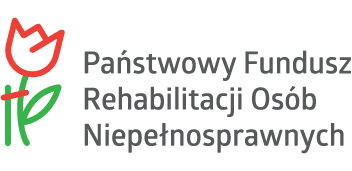Our mission is to enable people with disabilities to become fully involved in professional and social life.
Michael Hess

Mike Hess is the founder and executive director of the Blind Institute of Technology and serves on its Board of Directors. Determined to reduce the high unemployment rate among skilled blind and visually impaired IT and tech professionals in the U.S., Mike leads BIT’s mission to prepare blind and visually impaired people and the employers who hire them for success in the workplace.
Before founding BIT – a 501(c)(3) non-profit organization based in Colorado in February 2013 – Mike spent four years as a senior software engineer for Level 3 Communications, where he led a variety of IT and other technical projects. Prior to Level 3, Mike held IT, software engineering and other technical positions with Qwest, U.S. West and other companies during the course of his 18-year career.
Mike, who has been legally blind since first grade, graduated from Community College of Denver (CCD) in 1995 with a certificate in applications programing and also received the Student of the Year award from the Computer Training for People with Disabilities (CTPD) program.
Mike’s Journey
An English proverb states, “A journey of a thousand miles begins with a single step.”
Mike began his journey as a disabled person at the age of seven in a small, Midwestern town in Ohio. As an April Fools baby, he was a natural class clown and wanted to sit in the back of the class cracking jokes as early as first grade. He quickly moved to the front of the class after realizing he was not able to see the chalkboard.
After visiting several optometrists, Mike ended up in a large Cleveland hospital. It was there that he and his mother learned that Mike was losing his sight and would be completely blind by the age of 18. At such a young age, he had no idea what blind even meant. When he asked his mom, she simply stated that he was going to be special. At this point, in many ways, Mike began to fulfill her prophecy.
Mike’s mom was determined to keep him within the public schools and did not want to send him to a school for blind and deaf children. Disabled children are commonly placed into special learning programs within the public school system and Mike was no exception. This established a clear line in the sand with his classmates, stating plainly that he was different. However, he maintained the belief instilled in him by his mom that he was special, regardless of the large print books and dark colored paper he needed to aid his learning. Mike learned to make friends quickly and refused to allow classmates to bully him for being blind. Thus, Mike plotted the course along his thousand-mile journey by either engaging people with his sense of humor or by being tough.
At the start of junior high school, Mike’s family moved to Colorado and it was there that Mike began using low-vision technologies for the first time. His secondary school education was split between proactively learning the skills he would need in the future to live as a totally blind person (cane training and Braille classes) and the low-vision technologies that would assist him in the present.
Throughout his college career, Mike had to continue pushing through challenges. With the limited technology at that time, he needed to collaborate with others and use alternative methods to achieve success. In one instance, he paired up with a fellow student who had carpal tunnel syndrome. Mike was able to do the typing while his classmate acted as his eyes. So as a blind young person, Mike had experienced the shunning of someone who is different, but also the thrill of achieving goals that were widely considered unattainable for a blind person. His success and accomplishments continued to grow, and so did Mike’s belief that his journey was meant for greatness.
Immediately after college, Mike married his wife, Natalie, and adopted her two daughters. His family grew again in 2008 with the addition of Maddox (aka ‘Little Man’). Mike believes it’s important to show his children and others that his disability does not affect his life and that he is just as capable as people who have sight. Mike’s family continues to be his driving force whenever it seems like the world is unfair, supporting and inspiring him as he inspires others through all his successes and challenges.
Mike’s family, friends and business colleagues have seen him live his mantra that vision loss is simply an inconvenience and nothing more. They have watched Mike keep a positive attitude throughout all his trials and tribulations. In addition to his education and career accomplishments, Mike competed in martial arts, became a snow and water skier, ran half marathons and climbed 14,000 foot mountains.
Mike’s journey has been both trying and thrilling. However, his thousand miles are far from over. Thanks to his leadership, Board of Directors, corporate partners, talented blind and visually impaired IT and tech pros, family, friends and volunteers, the current phase of Mike’s journey – the Blind Institute of Technology -- is materializing right before his mind’s eye.


